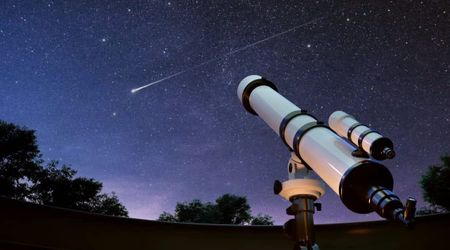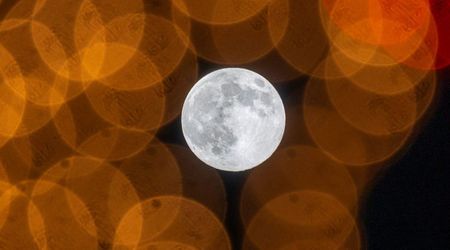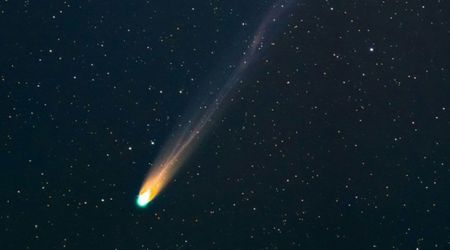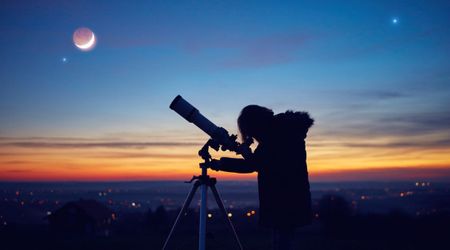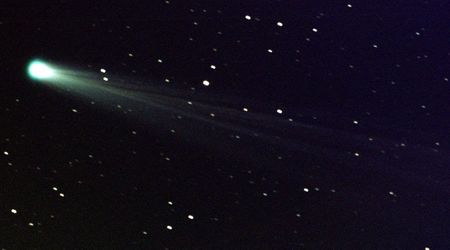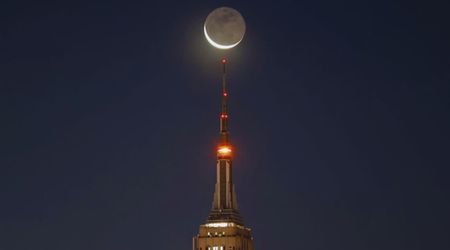saturn through a telescope

Viewing Saturn through a telescope is the exact event that started many amateur astronomer’s passion for stargazing. When I bought my first small telescope, the first planet that I ever managed to point it at turned out to be the ringed planet.






Can you see Saturn with any telescope?
Saturn is quite simply my favourite celestial object to observe in the night sky. I'll never forget the first time I saw Saturn through my brand new home telescope. It was in the backyard of my parent's house and I was absolutely dumbfounded and just stared at it for more than an hour or so, looking back and forth from the eyepiece to naked-eye, enchanted that the pinpoint of light I could see through my telescope was actually a planet.
Galileo Galilei was the first person to ever observe Saturn through an antique telescope in 1610 and now, a few hundred years later, it is quite easy to look at the same planet with a much better instrument that he had at the time.
Saturn through a telescope is something everyone should see at least once. You do not need to own an expensive or very powerful refracting / reflecting telescope to observe it satisfyingly. From all the planets that can be observed, Saturn is the best one to see in a small telescope because it is always quite bright and it looks great even with at a modest magnification power.
Even with an amateur telescope, the image is really beautiful, especially if the atmosphere above you is stable and offer good seeing opportunity: you will be able to enjoy a clear image of many of the planet's features when observing on colder nights. In my experience, when people observe the ringed planet for the first time, they usually hardly believe that it is not a photograph or some simulated image. It is the kind of moment that makes any beginners with a telescope feel all the effort was worth it.
It really gives us a sense that our universe is truly a big place, and that experience makes us feel truly small.
How to find Saturn with a telescope
Saturn is really far from the Sun and takes about 29.5 years to complete one full orbit around it. This means that from our point of view, we can find Saturn positioned in the same constellation for 2.5 years until it moves on to the next constellation. This year, the ringed planet hangs out around the Sagittarius constellation and will be visible in the early morning sky until it reaches opposition around the 9th of July. During that time frame, Saturn will rise and set two hours earlier every month. At this point, it will be clearly visible every night then slip into the evening twilight at the end of the year.
If you happen to own a computerised telescope (or go-to telescope), you will simply need to align it first then enter some navigational information such as latitude and longitude, your current time and time zone, etc. Your instrument will make some calculation between sky coordinates (where are celestial objects currently positioned in the sky) and the telescope coordinates (where you are positioned on the Earth). This will give your telescope an approximate alignment.
For smaller telescopes, you will have to identify find the planet with your naked eye first. It’s not hard to do: Saturn tends to have a yellowish glow and it does not twinkle as much as the stars.
Nowadays, there are many applications that make finding planets in the night sky a lot easier.
Finding Saturn with your phone
If you are stuck in your planetary hunting, there are a number of astronomy applications for mobile phones that can help you track down Saturn during your stargazing sessions. These apps can show you what's in the sky and their exact position in real-time. Use the search function and enter the celestial object you wish to find, it will point you in the right direction. It's easy and will save you some time. Once you know what you are looking out, point your telescope towards it and enjoy the view.
Star Walk 2 - Apple Store / Google Play
When is the best time to view Saturn?
Every year, a favourable event during several months called opposition makes it possible to admire Saturn with the best conditions. This celestial event is the moment when the planet is almost as close to the Earth as possible and it is a particularly exciting opportunity for stargazers. During opposition, Saturn is opposite to the Sun in relation to the Earth: the planet is visible all night and reaches its highest point in the sky in the middle of the night.

It’s always good to preemptively check where the planet will be placed on the night you have planned your viewing session. Depending on where you live on Earth and the time of the year, Saturn may not be well-placed. If it’s low in the sky, a lot of atmospheres may be clogging up the view.
The best telescope to observe Saturn and its moons
In terms of planetary observation, Saturn is a relatively easy telescopic target. You don’t necessarily need to have the fanciest optical equipment to obtain a good visual. The planet can be seen with a small amateur telescope, say a 3-inch refractor, or even with a pair of astronomical binoculars. Remember that Galileo was able to see Saturnian rings with his small telescope that he built hundreds of years ago, so you don’t need the most expensive instrument on the market.
Obviously, the larger the instrument the better, mainly because large telescope apertures have better resolution (the ability to reveal small details). However, during good atmospheric conditions (no turbulence, no winds, no light pollutions, etc.) you can expect to be able to see Saturn's rings and some of its moons.
Saturn has 4 main moons: Titan, Rhea, Tethys and Dione. These celestial bodies can be observed in scopes of medium aperture, granted that viewing conditions are good and the moon are not positioned too far from the planet. Mimas is another moon that can sometimes be seen but can be difficult due to its closeness to the rings. Titan is the easiest to catch and can be seen in almost any scope.
If you're unsure and not ready to invest in a telescope just yet, we recommend finding a local astronomy club and talking to some friendly astronomy folks there. They often hold star parties where they allow for beginners to take a look at planets like Saturn or Jupiter through their telescope. These people are passionate about astronomy and are willing to share with others. They’ll point you in the right direction.
What does Saturn look like through a telescope?
When it comes to planetary observation, a longer telescope focal length is useful: it will allow you to have a greater magnification for a given eyepiece and "zoom in" closer to Saturn but the telescope aperture is king.
Its size pretty much dictates the quality and the resolution of the image you’ll see. Bear in mind that having a large aperture won’t help at all if the weather is not with you. The ability to view planets like Saturn through your home telescope is heavily influenced by the “quality” of the sky above you. Light pollution, wind, atmospheric turbulence, and heat escaping from roofs of nearby houses are just a few of the many factors that make your stargazing session difficult.
Telescope views of Saturn
Granted you have good “seeing” conditions, here is what you can expect to see through your telescope.
2-inch telescope
This is one of the smallest apertures but, thanks to Saturn being big and bright, you will be able to see it. What you’ll see is a blob of light with an oblong-like shape. It’s the planet and its ring, but you won’t be able to see the separation between the two.
4-inch telescope
You will be able to see Saturn and its rings with a little more resolution. This time you should be able to see the separation more clearly. In good seeing condition and after your eyes have adapted to see through the eyepiece, you might even make it a couple of Saturnian moons.
8-inch telescope
This aperture size will allow you to gather a lot more light and thus, see a lot more of the finer details. The planet and the rings will have a clear separation and the moons will look like faint yet distinct points around Saturn. This is usually when people may start to go “wow” when looking through the telescope.
10-inch telescope
With a scope of that size, you will be able to see Saturn and the rings clearly separated. On a clear night, you may even expect to view the Cassini division and some colour nuances on the planet surface. After you’ve mastered the observation of Saturn, you could even try your hands at astrophotography!
Related: Check out our guide on how to purchase your first telescope.



Frequently Asked Questions
Can I see Saturn with a telescope?
You can definitely see Saturn with a telescope, granted that it is in your field of vision high above the horizon and that you are not located in an area with a high level of light pollution.
What kind of telescope do I need to see Saturn?
This planet is notoriously famous for how easy it is to observe with any kind of telescope. Refractor or Reflector, small or large aperture will influence the quality of the image but ultimately, any kind of telescope will allow you to see Saturn.
Can Saturn be seen at night without a telescope?
Saturn is one of the 5 planets that you can easily spot in the night sky without using a telescope. The ringed planet looks like a bright point of light that is a little larger than a normal star and does not twinkle much.
Icon source: Icon8
More Planets to Observe

Venus with telescope

Mars with telescope

Jupiter with telescope

